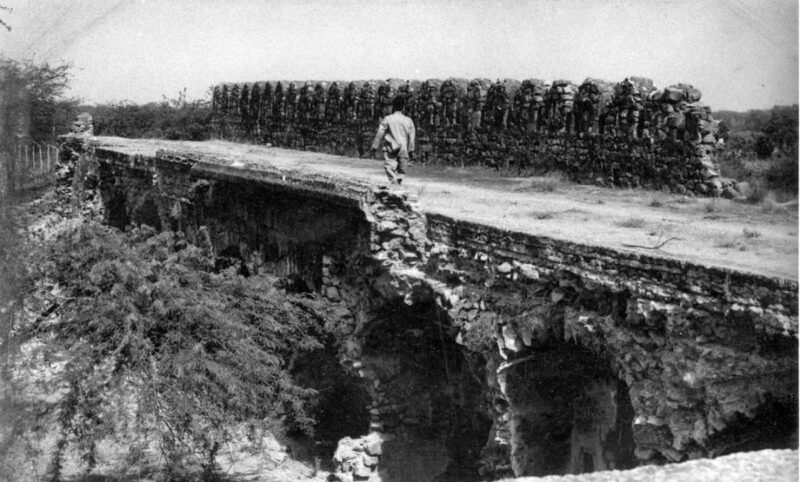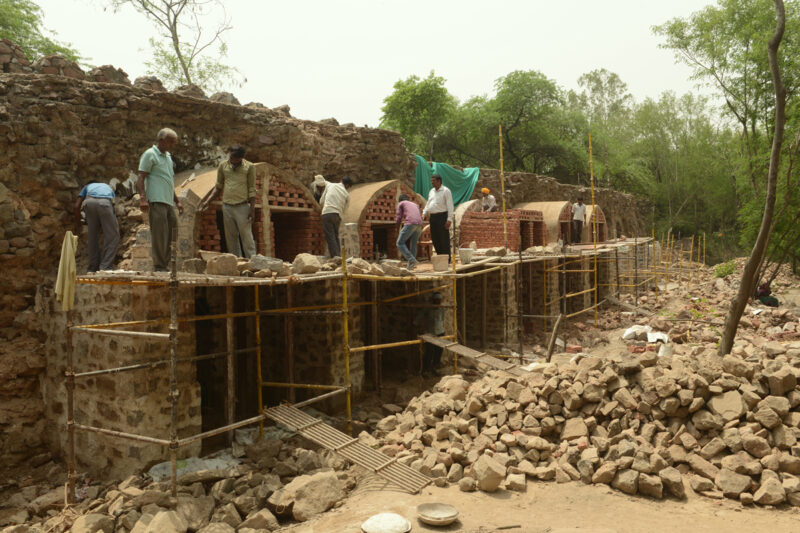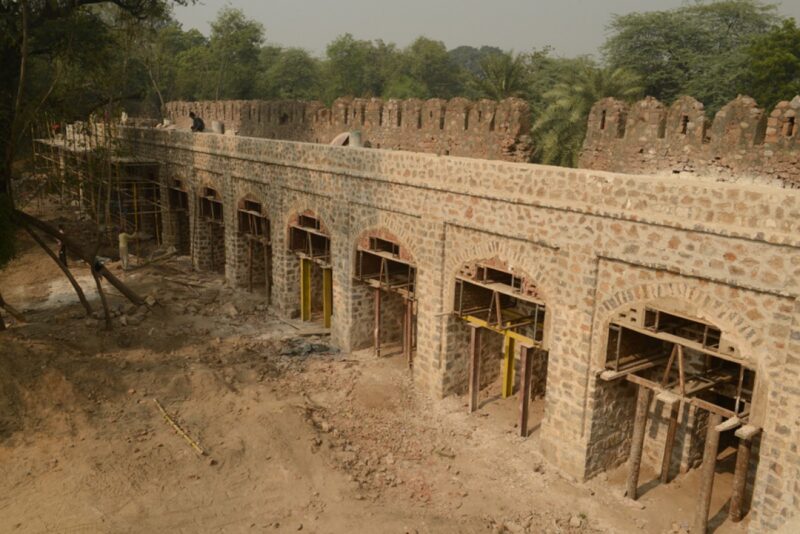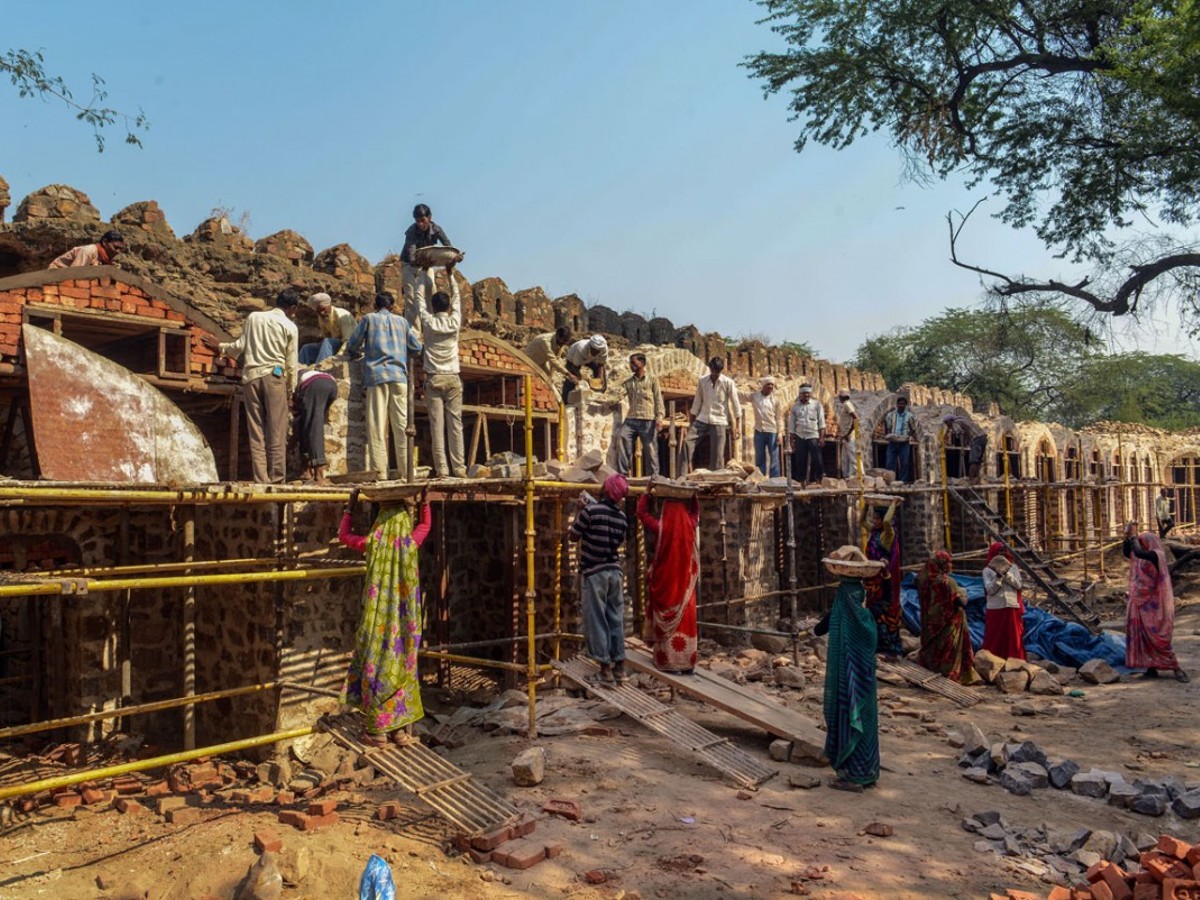Within a radius of 600 metres from the historic tomb of Humayun — the second Mughal emperor – Azimganj Serai stands as a living reminder of a bygone era. Constructed during the reign of Akbar, the Azimganj Serai, in the national zoological park, is one of the earliest standing structures from the Mughal period.
Years of ignorance and negligence has led to the decline of this historic monument. In past days, the site remained hidden and veiled from the public eye. However, under the Aam Aadmi Party’s initiative to make Delhi a major tourist spot, the situation is about to change.
Under this initiative, a lot of long ignored heritage sites will be revived and redeveloped. Azimganj Serai in Nizamuddin area is to get a huge makeover which is being reviewed by Deputy Chief Minister Manish Sisodia.
Also Read: Rags to riches: Gem of a man on Old Delhi’s footpaths
A senior government official told Patriot, “The government is making sure that Azimganj Serai is preserved and maintained with the utmost care so that the monument, which was established in the 16th century, can reclaim its rich identity.”
Proud heritage
Earlier on 13 September, Sisodia had stated that once the renowned Azimganj Serai’s restoration and beautification projects are finished, Delhi will gain a new tourist attraction. In addition to drawing crowds, it will also educate them about Delhi’s long and rich history.
This project is being carried out by the government’s Department of Archaeology of the NCT. This is the department responsible for conservation, preservation and maintenance of the monuments in Delhi which are beyond the influence and concern of the Archaeological Survey of India.

The Serai from the archives
“Unquestionably the largest of the Delhi serais, this building included 108 rooms arranged around a courtyard. Standing on the Grand Trunk Road in the 16th century, Azimganj Serai would have provided services to pilgrims, tourists, businesspeople, and artisans during the Mughal era. This structure’s gate has towering walls that give it a fortlike aspect”, states an official working with the Department of Archaeology.
“Apart from the historical importance, the Azimganj Serai is situated between the Delhi Zoo and Sunder Nursery and it exists as a key element in the larger view of an ecological as well as a historical corridor with Purana Quila at one end and the Humayun’s Tomb at the other”, added the official.
“It is believed that the historical Grand Trunk Road once passed through the area where the Sunder Nursery exists, and the area was called Azim Bagh, named after a Mughal noble”, he concluded.

Serai during the works of conservation
At present, Azimganj Serai is undergoing works of conservation with the goal of restoring the monument’s lost architectural integrity and cultural relevance. Regrettably, the monument has already suffered a considerable loss of architectural elements like chambers, arches, and stone walls during the past 50 years.
Missing credit
The whole credit for its revival is being given to the government’s Department of Archaeology. However, the Aga Khan Trust for Culture (AKTC) has been involved in its conservation since the year 2013.
This project, according to the information provided by the Aga Khan Foundation, is a joint venture between the Delhi Government’s Department of Archaeology and the AKTC. An MoU was signed between the Delhi Government’s Department of Archaeology and the AKTC to undertake the works of conservation.

The Azimganj serai in its final phase of its revival
As per the details provided by the Aga Khan Development Network, the development of Azimganj Serai has been a part of the Nizamuddin Urban Renewal Initiative. “Following an earlier grant from the Department of Archaeology in 2011, which was used for the conservation of Sayyid Yasin’s tomb, which is located inside the Humayun’s Tomb Complex in the World Heritage Site. The conservation work on the 16th century Azimganj Serai began in 2013. The money from the State Archaeology was used to conserve an important early Mughal period serai in Delhi, restoring both its architectural integrity and long lost cultural significance”, stated an official from the Aga Khan Trust.
When the conservation began, it was estimated that the effort would demand at least 2,50,000 days of labour from the craftspeople, creating a sizable amount of jobs. It was believed that the Azimganj Serai would significantly strengthen the case for expanding the limits of the World Heritage Sites to include the serai once it has been conserved and the collapsed portions have been rebuilt. This will further improve the Mughal cultural landscape of the Humayun’s Tomb setting. The dream which was seen almost a decade ago is about to be turned into reality.





